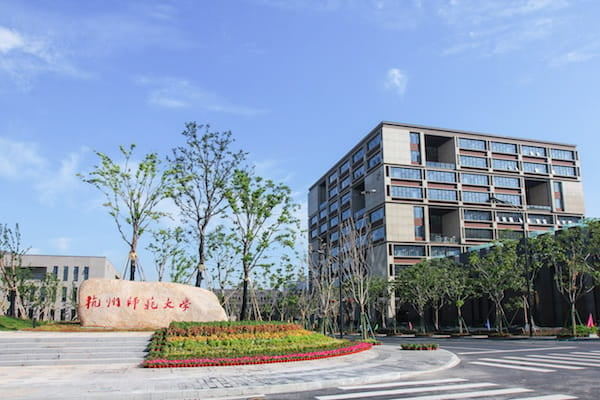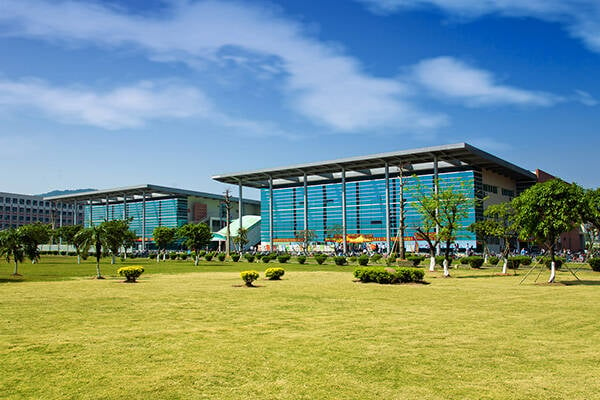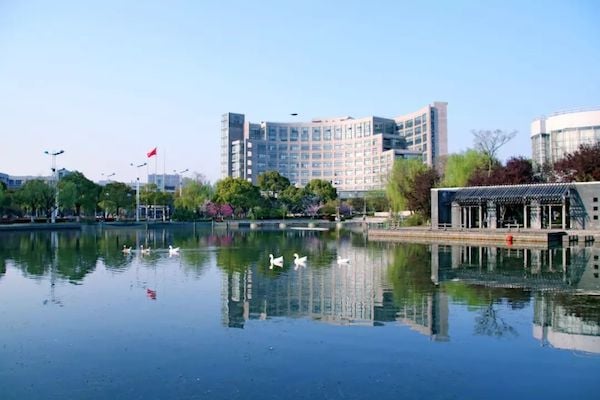Beijing Institute of Technology
 |
 |
 |
 |
Introduction to Beijing Institute of Technology
Beijing Institute of Technology (北京理工大学, website) was born in Yan’an in 1940. It was the first university of science and technology founded by the Communist Party of China. It was a nationally-focused university since the founding of the People’s Republic of China. The first batch entered the national “211 Project” and “985 Project”. Approved to enter the “world-class university” construction college A ranks. Comrade Mao Zedong personally wrote the name of the school. Older generations of proletarian revolutionaries such as Li Fuchun, Xu Teli, and Li Qiang successively served as the main leaders of the school. The school is now affiliated with the Ministry of Industry and Information Technology. All teachers and students are working towards the goal of the country’s “two hundred years” and are striving towards the goal of building a world-class university with Chinese characteristics.
In 1949, the Beijing Institute of Technology moved to Beijing; in 1952, the school was renamed Beijing Institute of Technology, becoming the first national defense industrial college in New China; in 1988, the school was renamed Beijing Institute of Technology. The school now has 18 professional colleges, 9 academies, teaching and research units such as the Institute of Frontier Interdisciplinary Sciences, the Institute of Advanced Structural Technology, the Institute of Medical-Industrial Integration, and engineering, materials science, chemistry, physics, mathematics, computer science, society Science has entered the top 1% of ESI international disciplines, of which engineering has entered the top 1 ‰. In recent years, schools have combined traditional advantages and long-term development needs, focusing on the construction of “5 + 3” subject groups-“Efficient Damage and Protection” subject group, “New Materials Science and Technology” subject group, and “Complex System Sensing and Control” Disciplinary group, “Transport Equipment and Manufacturing” discipline group, “Information Science and Technology” discipline group and “Characteristic science” discipline group, “Medical-industrial integration” discipline group, “Military-civilian integration and innovative development” discipline group, forming “Advantage Engineering” Leading the overall construction of the discipline, driven by the integration of special sciences, assisted linkage of high-quality liberal arts, and cross-cutting innovation and interaction. The school now has more than 3,400 faculty members, bringing together 23 academicians of the two academicians, 47 professors of the Yangtze River Scholars Award Program, 40 winners of the National Science Fund for Outstanding Young People, 4 national teaching teachers and other high-level talents. 6 national teaching teams, 4 National Natural Science Foundation innovation research groups, 10 Ministry of Education “Changjiang Scholars” innovation teams; 2 national collaborative innovation centers, 9 national key laboratories and engineering research centers, 6 National experimental teaching centers.
Among the more than 300,000 graduates since the establishment of the school, Li Peng, Zeng Qinghong, Ye Xuanping and other party and state leaders, as well as more than 120 party and government leaders and generals at the provincial and ministerial levels and above; have the highest national science and technology award winners Wang Xiaomo, China’s first nuclear submarine chief designer Peng Shilu and more than 40 academicians; there are a large number of leaders and outstanding builders in various industries and at all levels, known as “the cradle of red defense engineers”. The school has accumulated 20 national teaching achievement awards, 10 national excellent courses, 10 national excellent video public courses, 9 excellent resource sharing courses, 15 excellent online open courses, and 2 national virtual simulation experimental teaching projects. The school currently has more than 28,000 full-time students; at the National College Student Innovation and Entrepreneurship Annual Meeting of the Ministry of Education, 15 works won the “Top Ten Works” award; in 2017, students in the UAE capital Abu Dhabi Winners of top international competitions in the field of man-machine and robotics; in 2018, students won four gold awards in the “Creation of Youth” National University Student Entrepreneurship Competition, and the fourth China “Internet +“ University Innovation and Entrepreneurship Competition Champion, Third Place and College Collective Award , Won the British International College Student Aircraft Design Contest’s heavy flight group champion; in 2019, the student won two gold awards and college collective awards in the 5th China “Internet +” College Student Innovation and Entrepreneurship Competition, ICRA 2019 RoboMaster artificial intelligence international challenge held in Montreal, Canada He won the championship and won two gold medals in the International Genetic Engineering Machinery Competition (iGEM) held in Boston, USA. In the past five years, the undergraduate employment rate has remained above 97%, and the graduate employment rate has reached over 98%. Facing internationally, the school has signed school-level cooperation agreements with more than 270 universities in 74 countries and regions on 6 continents, and Munich University of Technology, Aachen University of Technology, Bauman State Technical University, Russia, Delft University of Technology, More than 50 partner institutions including Tokyo Institute of Technology in Japan, Israel Institute of Technology, and Illinois Institute of Technology in the United States have set up student exchange programs to form an international network of talent training.
The Beijing Institute of Technology has created several “firsts” in the history of science and technology in New China: the first television transmitting and receiving device, the first secondary solid-state high-altitude detection rocket, the first light tank, the first low-altitude altimetry radar, The first 20 km long-range camera, etc., represents the national level in national defense science and technology fields such as precision strike, efficient damage, mobile penetration, remote suppression, military information systems and confrontation, etc., in intelligent bionic robots, green energy, modern communications, industrial processes Control and other dual-use technologies have obvious advantages. During the celebration of the 70th anniversary of National Day, the school participated in the development of equipment for 10 of the 12 air squadrons and 26 of the 32 ground equipment squadrons. Digital performance and simulation tasks, firework technical tasks and technical support for float design. During the Beijing Olympics, Shanghai World Expo, Guangzhou Asian Games, “Shenzhou 8” and “Tiangong 1” rendezvous and docking, many technologies developed by the school have excellent performance. During the “Twelfth Five-Year Plan” period, the school’s total investment in science and technology reached nearly 10 billion yuan, and it won 23 national science and technology awards. Ranked third in colleges and universities, and won the total number of national defense science and technology awards, authorized national defense patents and effective national defense patents. In 2016, the school won 5 national science and technology awards; in 2017, the school won 9 national science and technology awards; in 2018, the school took the lead in winning 6 national science and technology awards. A number of scientific and technological achievements have directly served major projects of national economy and people’s livelihood.
Teaching Program
![]() ISAC University Teaching Program
ISAC University Teaching Program
Related Universities




